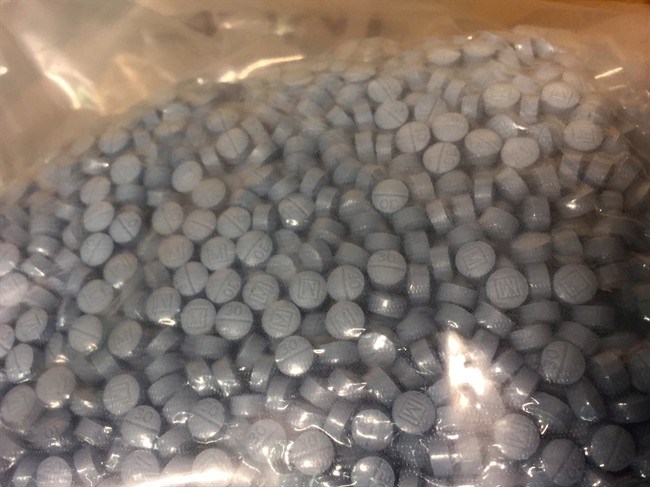The potency of fentanyl is not only leading to more drug overdose deaths, but those who survive are more likely to suffer acute brain damage, B.C. doctors and paramedics say.
It’s one of the long-term effects of the fentanyl crisis, which could leave some drug users with irreparable damage and put a strain on the health-care system.
Jon Deakin, an advanced-care paramedic based in Victoria, said much emphasis has been put on naloxone, a life-saving antidote that reverses the effects of an opioid overdose, but not enough on rescue breathing or CPR as a tool to prevent brain damage.
“We’re hearing so much about naloxone and how it’s the antidote, but it’s only one part of the equation,” Deakin said.
Fentanyl, like other opioids, causes the respiration rate to slow down and eventually stop, he said. If a person stops breathing for several minutes, it could lead to cardiac arrest, at which point naloxone alone will not resuscitate them.
“When the brain is deprived of oxygen, it can cause irreversible damage,” Deakin said.
“This is where we’re seeing the patients admitted to the intensive care unit because they’re not coming back from this overdose.”
While statistics on overdose-related brain injuries are not available, Dr. Del Dorscheid, a critical care doctor in the intensive care unit at St. Paul’s Hospital in downtown Vancouver, said anecdotally he is seeing more cases of hypoxic brain injury linked to drug overdoses.
“Fentanyl is so potent, it only takes minutes without breathing and they’ve got brain complications,” he said.
Dorscheid estimates that 90 per cent of drug overdose patients in the intensive care unit suffer some type of brain trauma, ranging from memory loss to complete loss of brain function.
It costs about $5,000 a day to care for someone with brain damage, he said, and some people require months of intensive care.
A record number of people have died from illicit drug overdoses in B.C. this year — 755 between January and the end of November, an increase of more than 70 per cent from the same period last year, according to the B.C. Coroners Service.
Sixty overdose deaths have been recorded in Victoria, trailing Vancouver at 164 and Surrey at 92. Nanaimo has had 25 deaths.
While Island Health tracks the number of overdose patients brought into emergency rooms, the numbers are not publicly available, said spokeswoman Kellie Hudson.
The health authority is not tracking how many overdose patients are referred to long-term care.
Several organizations are working on ways to speed responses to overdoses.
The Ambulance Paramedics of B.C. union has advocated for community ambulances to be stationed in overdose hot spots so they can respond more quickly — potentially preventing long-term health problems.
Last month, the B.C. government announced $5 million to help paramedics better respond to fentanyl overdoses in Vancouver’s Downtown Eastside and an area with high overdoses in Surrey.
AIDS Vancouver Island is taking part of in a program called Toward the Heart, which is administered by the B.C. Centre for Disease Control and aims to educate people about how to help someone who is overdosing in the time before paramedics arrive.
Heather Hobbs, AIDS Vancouver Island’s co-ordinator of harm reduction, said all naloxone kits include a plastic breathing mask and CPR instructions.
“It could take five or 10 minutes for an ambulance to arrive,” Hobbs said. “It’s in those minutes that rescue breathing needs to happen.”
Overdose-prevention sites also help ensure quick intervention is available in case of an overdose, said Grant McKenzie of Our Place, which is home to one of the sites.
The site, located in a shipping container in the courtyard of the Pandora Avenue drop-in centre, is staffed by a paramedic and a mental-health care worker.
In its first week, it was used by 84 people who visited a total of about 200 times.
British Columbia enacted a ministerial order on Dec. 12 to support the creation of temporary overdose-prevention sites until official supervised-consumption sites, with attached health and social services, can be approved by Health Canada.



